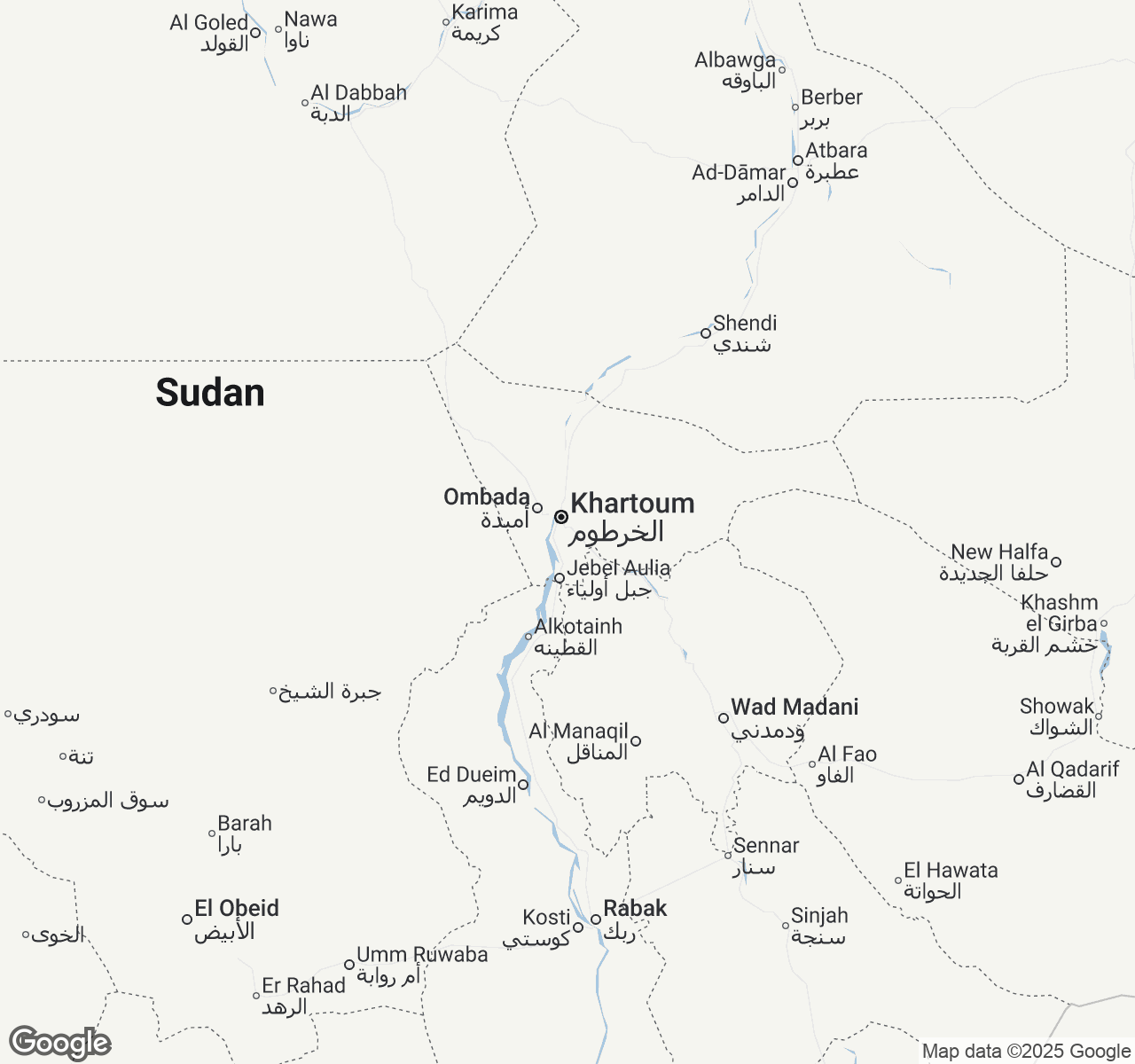
Things to Do in Khartoum
Discover the best of Khartoum
Plan Your Trip
Essential guides for timing and budgeting
Top Things to Do in Khartoum
Discover the best activities and experiences. Book now with our trusted partners and enjoy hassle-free adventures.
Explore Destinations in Khartoum
Blue And White Nile Confluence
City
Blue Nile Sailing Club
City
Friendship Hall
City
Grand Mosque
City
Khalifa House Museum
City
Khartoum Central Market
City
Khartoum North (Bahri)
City
Mac Nimir Bridge
City
Mahdi'S Tomb
City
Mogran Area
City
National Museum Of Sudan
City
Omdurman
City
Republican Palace
City
Souq Al Arabi
City
Souq Al Shaabi
City
Tuti Island
City
University Of Khartoum
City
Your Guide to Khartoum
About Khartoum
Where the Blue and White Nile rivers converge in eternal embrace, Khartoum emerges as Sudan's beating heart, a city where ancient Nubian heritage flows easyly into contemporary African life. The capital pulses with the rhythm of traditional dabke drums echoing from bustling souks, while the call to prayer weaves through streets lined with colonial architecture and modern glass facades. Here, merchants peddle frankincense and gold as they have for millennia, their weathered hands telling stories of caravan routes that once connected Africa to the Mediterranean. The Nile's gentle current carries feluccas with billowing white sails past riverside cafés where locals sip sweet tea and engage in animated conversations that span politics, poetry, and philosophy. Khartoum is not merely a destination—it's a living tapestry where Sudanese hospitality transforms strangers into honored guests, where every sunset over the confluence paints the sky in hues that mirror the warmth of its people's souls.
Travel Tips
Transportation: Use registered taxis or ride-sharing apps like Tirhal for safe city travel. Avoid public buses during peak hours as they're overcrowded. For longer distances, book domestic flights through Khartoum International Airport or use reputable bus companies like Blue Nile Transport.
Money: Carry US dollars or Euros for exchange, as international cards rarely work. Exchange money at official banks or licensed bureaus for better rates. The Sudanese pound fluctuates dramatically, so exchange small amounts frequently and keep receipts for reconversion.
Cultural Respect: Dress conservatively with long sleeves and pants; women should carry headscarves for mosque visits. Friday is the holy day with limited business hours. Always ask permission before photographing people, especially women, and avoid public displays of affection.
Food Safety: Stick to well-cooked meals from busy restaurants with high turnover. Try traditional dishes like ful medames and kisra at established local eateries. Drink bottled water exclusively and avoid raw vegetables unless you can peel them yourself.
When to Visit
Khartoum's optimal visiting season spans November through February, when temperatures range from a pleasant 15-28°C (59-82°F) with virtually no rainfall. These cooler months offer comfortable sightseeing conditions and coincide with peak season pricing, typically 30-40% higher for accommodations. March and October serve as excellent shoulder seasons with temperatures around 25-35°C (77-95°F), offering moderate pricing with 15-20% savings on hotels while maintaining good weather conditions. The scorching summer months from April to September see temperatures soar to 35-45°C (95-113°F), with the brief rainy season occurring July through September bringing 50-150mm of precipitation. However, this period offers significant savings of 40-50% on accommodations for heat-tolerant travelers. Key cultural events include the Khartoum International Film Festival in November, Eid celebrations (dates vary with lunar calendar), and Independence Day celebrations on January 1st. The confluence celebration at the Blue and White Nile occurs year-round but is most enjoyable during cooler months. Business travelers should avoid Friday-Saturday weekends and Ramadan period when many services operate on reduced schedules. For photographers, the golden winter light and clear skies make November-February ideal for capturing the city's architectural beauty and river landscapes.

Khartoum location map